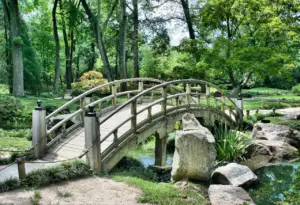Tainan, the oldest city in Taiwan, is a historical and cultural hub that offers an array of landmarks and cultural sites. From ancient forts to traditional temples, Tainan’s rich history is evident in its architecture, museums, and markets.
This article serves as a guide to the top 10 landmarks and cultural sites in Tainan, providing insight into the city’s history and culture. The landmarks and cultural sites on this list showcase Tainan’s diverse history and culture, ranging from the Dutch colonial era to the Japanese occupation and the Chinese Nationalist period.
Each site offers a unique perspective on Tainan’s past and present, providing visitors with an opportunity to immerse themselves in the city’s rich heritage. Whether you’re a history buff, a culture enthusiast, or simply a curious traveler, Tainan’s landmarks and cultural sites are a must-see on any visit to Taiwan.
Key Takeaways
- Tainan is the oldest city in Taiwan with a rich history and culture, influenced by Dutch, Chinese, and Japanese colonialism.
- The top 10 landmarks and cultural sites in Tainan include the Anping Tree House, Fort Zeelandia, Confucius Temple, Chihkan Tower, National Museum of Taiwan Literature, and Shennong Street.
- The Tainan Confucius Temple showcases a blend of traditional Chinese and Taiwanese architecture and offers lectures, exhibitions, and performances to learn more about Confucianism and its impact on Taiwanese culture.
- The National Museum of Taiwan Literature houses an impressive collection of literary works, including manuscripts, diaries, and letters, reflecting social, political, and economic changes that shaped Taiwan’s history. Interactive exhibits such as the Digital Archive, Literary Journey, and Writer’s Workshop are also available.
Anping Tree House
The Anping Tree House, a former warehouse complex that has been overgrown with banyan trees, offers a unique glimpse into the history of Tainan’s commercial and industrial development. Originally built by the Dutch East India Company in the 17th century as a stronghold for trade and commerce, the complex was later used as a warehouse for salt and then for camphor during the Japanese colonial era.
The banyan trees that now cover the complex were planted during the 1940s, and have since grown to engulf the entire site, creating a mystical and dreamlike atmosphere. Visitors can explore the network of paths and staircases that wind through the tree-covered ruins, and see remnants of the original brick walls and archways.
The Anping Tree House is not only a testament to Tainan’s rich history, but also a natural wonder that is sure to enchant and inspire.
Fort Zeelandia
Fort Zeelandia, a colonial fortress built by the Dutch in the 17th century, is a significant historical site located in the Anping District of Tainan City.
Originally named Fort Provintia, it was constructed in 1624 as a defense against the Spanish and indigenous populations. The fort was renamed as Fort Zeelandia in honor of the Dutch province of Zeeland, which was known for its maritime prowess at the time.
The fort was built with a combination of European and Chinese architecture, reflecting the Dutch East India Company’s desire to establish a presence in the area and conduct trade with China.
The fort was the center of Dutch colonialism in Taiwan, serving as the headquarters for the Dutch government and military until it was captured by Koxinga in 1662.
Today, it has been restored and turned into a museum, showcasing the history of Dutch colonization in Taiwan and the relationships between the Dutch, Chinese, and indigenous populations during that time.
Confucius Temple
The Confucius Temple in Tainan is a must-visit destination for those who want to experience Taiwan’s Confucian heritage.
The temple, established in 1665, was built to pay homage to the Chinese philosopher, Confucius.
Visitors can learn about the temple’s rich history and enjoy the beautiful architecture, which features intricate carvings and colorful decorations.
Experience Taiwan’s Confucian Heritage
Immerse yourself in Taiwan’s rich cultural history by exploring the Confucian temples and schools located throughout Tainan. Confucianism is a philosophy that emphasizes the importance of education, ethics, and social order. It has had a significant impact on East Asian culture and is still influential today.
In Tainan, visitors can experience the Confucian heritage by visiting places like the Tainan Confucius Temple, which was built in 1665, and the National Cheng Kung University, which was established in 1931 as the first university in Taiwan to use Mandarin Chinese as its primary language.
At the Tainan Confucius Temple, visitors can see traditional Chinese architecture and learn about Confucian philosophy and its influence on Taiwanese culture. The temple is also home to a collection of Confucian texts and artifacts.
The National Cheng Kung University, on the other hand, is an example of how Confucianism has influenced modern education in Taiwan. The university’s motto, ‘Harmony, Independence, Sincerity, and Perseverance,’ reflects Confucian values and is still used today.
By visiting these landmarks and cultural sites, visitors can gain a deeper understanding of Taiwan’s Confucian heritage and its enduring impact on the country’s traditions, values, and education.
Learn About the Temple’s History
Exploring the historical background of the Tainan Confucius Temple provides insight into the enduring legacy of Confucianism in Taiwan. The temple was constructed in 1665 during the reign of the Kangxi Emperor of the Qing Dynasty. It was built to honor Confucius, the ancient Chinese philosopher and educator, who is considered to be one of the most influential figures in Chinese history.
The temple is located on a large piece of land in the heart of Tainan City, and it has undergone several renovations and expansions over the years to accommodate the growing number of visitors. Apart from the main hall, the temple complex also features several other buildings, including a library, a lecture hall, and a shrine to Confucius’s disciples.
The architecture of the temple is a blend of traditional Chinese and Taiwanese styles, with intricate carvings and beautiful murals adorning the walls and ceilings. The temple is not only a place of worship but also serves as a center for Confucian studies and cultural activities. Visitors can attend lectures, exhibitions, and performances to learn more about Confucianism and its impact on Taiwanese culture.
Overall, the Tainan Confucius Temple is a must-visit destination for anyone interested in exploring the rich cultural heritage of Taiwan.
Enjoy the Beautiful Architecture
Admiring the intricate carvings and beautiful murals of the Tainan Confucius Temple’s architecture is a feast for the eyes. Built in 1665, the temple is considered one of the most well-preserved examples of traditional Confucian architecture in Taiwan. Its impressive size and intricate details make it a must-see landmark for visitors to Tainan.
One of the most notable features of the temple’s architecture is its use of vibrant colors and intricate carvings. Visitors can admire the detailed depictions of dragons, phoenixes, and other mythical creatures that adorn the temple’s pillars and walls.
The temple also features a beautiful courtyard, which is surrounded by a covered walkway featuring more intricate carvings and murals. Overall, the Tainan Confucius Temple’s architecture is a testament to the skill and artistry of traditional Taiwanese craftsmen, and a must-see for anyone interested in the country’s rich cultural heritage.
Chihkan Tower
Chihkan Tower, also known as Fort Provintia, is a historical landmark located in Tainan City, Taiwan. The tower was originally built in 1653 by Dutch colonizers as a stronghold to protect their trade interests. However, the fort was captured by Koxinga, a Chinese general, in 1661, marking the end of Dutch colonial rule in Taiwan. The tower was then used as the military headquarters of the Zheng family, who ruled Taiwan for the next 22 years.
Today, Chihkan Tower stands as a testament to the complex history of Taiwan. The tower’s architecture is a blend of Dutch, Chinese, and Japanese influences, reflecting the various colonial powers that ruled Taiwan over the centuries. Visitors can explore the tower’s interior, which features exhibits on the history of Tainan and the tower’s role in Taiwan’s colonial past. The surrounding park also offers a peaceful respite from the hustle and bustle of the city, and visitors can enjoy a picnic or take a stroll through the gardens.
| Facts about Chihkan Tower | ||
|---|---|---|
| Location | West Central District, Tainan City, Taiwan | |
| Height | 21 meters | |
| Admission fee | NT$50 for adults, NT$25 for students and children |
National Museum of Taiwan Literature
The National Museum of Taiwan Literature is a must-visit destination for those interested in discovering Taiwan’s literary heritage.
The museum houses an impressive collection of literary works, including manuscripts, diaries, and letters, that provide a unique insight into the country’s rich cultural history.
Visitors can also enjoy a range of interactive exhibits that offer an immersive experience of Taiwan’s literary world, making it a fascinating and educational experience for all.
Discover Taiwan’s Literary Heritage
Taiwan’s literary heritage is a rich tapestry of history, culture, and tradition, with Tainan playing a significant role in preserving and showcasing this legacy.
The National Museum of Taiwan Literature in Tainan is the place to go for those who wish to explore Taiwan’s literary scene. The museum has an extensive collection of literature from Taiwanese writers, including works in Chinese, Taiwanese, and Hakka. Visitors can also learn about the history of Taiwan’s literature through the museum’s exhibits, which cover everything from the earliest writings in Taiwan to contemporary literature.
Apart from the National Museum of Taiwan Literature, there are several other sites in Tainan that offer a glimpse into Taiwan’s literary heritage. The Tainan Municipal Cultural Center, for instance, regularly hosts events related to literature, such as book launches and author talks. The Shu-Lin Literature and Art Center is also a must-visit for literature enthusiasts, as it houses a vast collection of books and manuscripts, as well as hosting literary events.
These cultural sites provide a unique opportunity for visitors to learn about Taiwan’s literary history and engage with its contemporary literary scene.
Learn About the Museum’s Collections
Exploring the extensive literature collections at the National Museum of Taiwan Literature in Tainan offers visitors a unique opportunity to learn about the history and evolution of Taiwanese literature. The museum houses a diverse collection of literary works, including books, manuscripts, and other artifacts that span from the early Qing dynasty to the present day.
These collections not only provide insight into the literary traditions and cultural practices of Taiwan, but also reflect the social, political, and economic changes that have shaped the country’s history.
The museum’s collections are organized thematically, making it easy for visitors to navigate and explore different literary genres and historical periods. Some of the notable collections include the ‘Taiwan Literary Periodical Collection,’which contains over 5,000 periodicals and newspapers published in Taiwan from the late 19th century to the present day.
The museum also houses a variety of literary manuscripts, such as the ‘Chen Jiugong Manuscripts,’a collection of literary works written by the famous Taiwanese writer Chen Jiugong.
Overall, the National Museum of Taiwan Literature is a valuable resource for anyone interested in the rich cultural heritage and literary traditions of Taiwan.
Enjoy the Interactive Exhibits
Visitors to the National Museum of Taiwan Literature can engage with the rich literary culture of Taiwan through interactive exhibits that offer a unique and immersive experience. The museum’s interactive exhibits are designed to create a space for visitors to engage with the literary culture of Taiwan in a way that is both educational and entertaining.
Here are three examples of the interactive exhibits that visitors can enjoy:
-
The Digital Archive: This exhibit allows visitors to explore the museum’s vast collection of literary works through a digital archive. The archive includes works from some of Taiwan’s most celebrated writers, as well as lesser-known works that offer insight into the country’s literary history.
-
The Literary Journey: This immersive exhibit takes visitors on a journey through Taiwan’s literary history. Visitors are guided through different periods of Taiwan’s literary history, from the early days of Chinese literature to the contemporary era. Along the way, visitors can interact with exhibits that bring to life the works of some of Taiwan’s most celebrated writers.
-
The Writer’s Workshop: This exhibit allows visitors to experience the process of writing in a fun and interactive way. Visitors can experiment with different writing styles, learn about the tools and techniques used by writers, and receive feedback on their own writing. This exhibit is particularly popular with children and young adults, who enjoy the opportunity to explore their creative side.
Hayashi Department Store
One of Tainan’s most iconic landmarks is the Hayashi Department Store, a historic building that has been beautifully preserved and serves as a testament to the city’s rich cultural heritage. The store was built in 1932 by a Japanese merchant named Hayashi, and it is a fine example of the Art Deco style that was popular during that era.
The building has a unique shape with stepped setbacks and a rooftop garden that offers a stunning view of the city. The Hayashi Department Store was an important commercial hub during the Japanese occupation of Taiwan, and it was famous for its high-quality goods and excellent customer service.
Today, the building has been repurposed as a cultural and creative center that hosts a variety of exhibitions, workshops, and events. Visitors can explore the store’s many floors and discover its rich history, as well as enjoy the various art and cultural exhibits that are on display.
The Hayashi Department Store is truly a must-see destination for anyone interested in Tainan’s fascinating history and vibrant cultural scene.
Shennong Street
Shennong Street is a historical and cultural landmark in Tainan that is well-known for its traditional Taiwanese architecture. Visitors to this street can explore the unique buildings and structures that have been preserved over time.
In addition to its architectural charm, Shennong Street also offers the opportunity to learn about the area’s rich history and sample local cuisine.
Whether you are a history buff, a foodie, or simply looking for a unique cultural experience, Shennong Street is definitely worth a visit.
Explore the Traditional Taiwanese Architecture
The traditional Taiwanese architecture in Tainan showcases the influence of various cultures and historical periods. The city has been shaped by Dutch, Chinese, and Japanese colonialism, each leaving their unique mark on the city’s architectural landscape.
The Dutch Fort Zeelandia, built in 1624, is an excellent example of the Dutch influence on Tainan’s architecture. The fort’s walls are made of red bricks and still stand today, a testament to the Dutch’s engineering prowess.
Similarly, the Japanese colonial government built the Tainan Prefecture Hall in 1913, which is now a museum showcasing the city’s historical artifacts. The building features a combination of Western and Japanese architectural styles, which is a reflection of their influence on Taiwan during that period.
The traditional Taiwanese architecture is characterized by the use of locally-sourced materials, such as mud bricks, red-tiled roofs, and wooden beams. The buildings often have courtyards, reflecting the importance of family and community in Taiwanese culture.
The Anping Tree House, built in the late 19th century, is a unique example of Taiwanese architecture. The building was once a warehouse owned by the British trading company Tait & Co, and it was later abandoned and taken over by banyan trees. The trees grew around the building and eventually swallowed it, creating a stunning natural spectacle.
Overall, exploring the traditional Taiwanese architecture in Tainan provides a glimpse into the city’s rich history and cultural heritage.
Learn About the Street’s History
Examining the historical background of the street provides a deeper understanding of its significance within Tainan’s cultural landscape.
The Shennong Street, also known as Shen Nong Street, is one of the oldest streets in Tainan and dates back to the 17th century.
It was named after the legendary Emperor Shennong, who is known as the father of agriculture in Chinese mythology.
The street was once a bustling commercial center, with numerous shops, restaurants, and tea houses.
Today, it has been restored to its former glory and is a popular tourist destination.
Visitors can enjoy the unique architecture, shop for souvenirs, and sample traditional Taiwanese snacks.
To fully appreciate the cultural significance of the Shennong Street, it is essential to learn about its history.
Here are some interesting facts about the street’s past:
-
The street was once a hub for trade with Japan, and many Japanese merchants lived and worked there.
-
During the Qing Dynasty, it was a residential area for government officials and wealthy families.
-
The street played a significant role in the development of Taiwan’s tea industry, with many tea houses and shops selling tea leaves.
-
In the early 20th century, the street was known for its cinemas and theaters, attracting many movie-goers.
By understanding these historical facts, visitors can gain a deeper appreciation for the street’s cultural and historical significance.
The Shennong Street is not just a collection of buildings; it is a window into Tainan’s rich past and a testament to the city’s enduring cultural heritage.
Enjoy the Local Cuisine
Indulging in the local cuisine is a must-do experience for visitors to Tainan, and the Shennong Street offers a wide range of traditional Taiwanese snacks and dishes to satisfy any foodie’s cravings.
The street is home to numerous food stalls and restaurants that serve up a variety of authentic Taiwanese delicacies, such as oyster omelets, beef soup, and fried chicken.
One of the most famous dishes on Shennong Street is the danzai noodles, a bowl of thin noodles topped with minced pork, shrimp, and a savory broth that has been simmered for hours.
Aside from the delicious food, Shennong Street also offers a unique dining experience.
Most of the food stalls are set up in traditional Taiwanese houses, with open-air courtyards and wooden tables and chairs.
The atmosphere is lively and bustling, with locals and tourists alike huddling around tables and sharing plates of food.
The street is especially crowded during weekends and holidays, when visitors can expect to wait in line for some of the more popular food stalls.
Overall, a visit to Shennong Street is a must-do for anyone looking to experience the best of Tainan’s culinary culture.
Tainan Flower Night Market
The Tainan Flower Night Market is a popular destination for tourists and locals alike. Here, one can experience the local night market culture and immerse oneself in the vibrant atmosphere.
The market is known for its delicious local food, ranging from traditional Taiwanese dishes to international cuisine. Visitors can indulge in a variety of street food and snacks, while enjoying the sights and sounds of the bustling night market.
Experience the Local Night Market Culture
Immerse yourself in the vibrant local night market culture of Tainan, where you can sample a variety of traditional Taiwanese snacks and interact with friendly locals. Tainan boasts several night markets, each with its own unique atmosphere and offerings. One of the most popular is the Tainan Flower Night Market, which offers a wide variety of food, clothing, and souvenir stalls.
To fully experience the local night market culture, it is essential to try some of the traditional snacks that are unique to Tainan. Some popular options include oyster omelets, coffin bread, and shrimp rolls. These dishes are often made right in front of you, giving you the opportunity to see the skill and care that goes into their preparation. Additionally, chatting with local vendors and other market-goers is a great way to learn more about the culture and history of Tainan. The night market truly offers a sensory experience that should not be missed.
| Snack | Description | Image |
|---|---|---|
| Oyster Omelet | A savory omelet made with eggs, oysters, and vegetables. |  |
| Coffin Bread | A thick slice of bread that is hollowed out and filled with ingredients such as seafood or curry. |  |
| Shrimp Rolls | Crispy rolls filled with a mixture of shrimp and vegetables. |  |
Try the Delicious Local Food
To fully appreciate the culinary offerings of Tainan, one must sample the diverse and flavorful local cuisine.
Tainan is known as the birthplace of Taiwanese cuisine and is famous for its traditional snacks, street food, and seafood dishes. Some of the must-try dishes include: oyster omelet, coffin bread, beef soup, milkfish soup, shrimp rolls, and fried chicken. Tainan is also home to some of the oldest and most famous restaurants in Taiwan, including Du Hsiao Yueh, which has been serving danzai noodles for over 120 years.
In addition to traditional Taiwanese cuisine, Tainan also offers a unique fusion of flavors due to its historical connections with Japan and the Netherlands.
One example of this is the popular dish, salted egg yolk shrimp, which is a Japanese-inspired dish made with local ingredients. Visitors can also try the Dutch-inspired dish, oyster pancake, which is made with a batter of sweet potato starch and egg, and topped with fresh oysters, cilantro, and a sweet and savory sauce.
With so many delicious options to choose from, it’s no wonder Tainan has become a foodie destination for travelers from around the world.
Enjoy the Vibrant Atmosphere
One can experience a lively and energetic atmosphere in Tainan, with bustling streets, vibrant night markets, and lively festivals throughout the year. This city is the cultural capital of Taiwan, and its vibrant atmosphere showcases its history and traditions.
Here are some of the reasons why Tainan is a must-visit destination for those who love to experience different cultures:
-
The city’s night markets are a food lover’s paradise, offering a wide range of local delicacies, from oyster omelets to bubble tea. These markets are also a great place to experience the local culture, as vendors and customers mingle and chat in a lively and friendly atmosphere.
-
Tainan is home to many historic temples and shrines, which are still actively used by locals today. Visitors can witness the rituals and ceremonies that are an integral part of Taiwanese culture, and learn about the city’s religious traditions.
-
The city is also known for its vibrant arts scene, with many galleries and museums showcasing the work of local artists. Visitors can explore the city’s contemporary art scene, as well as its traditional handicrafts, which are still produced by skilled artisans.
-
Tainan is a city that loves to celebrate, with festivals and events happening throughout the year. From the famous Tainan Lantern Festival to the lively Dragon Boat Festival, there is always something happening in this city.
-
Finally, the people of Tainan are known for their hospitality and friendliness. Visitors will feel welcomed and at home in this warm and welcoming city, and will leave with many fond memories of their time here.
Frequently Asked Questions
What is the history behind the Anping Tree House and how did it come to be abandoned?
The Anping Tree House is a historical building in Tainan, Taiwan, which was originally built by the British East India Company as a warehouse in the 1860s.
Later, the building was used as a residence by a wealthy merchant family, the Lius, before being turned into a salt storage facility during the Japanese colonial era.
The building was abandoned after World War II and became overgrown with banyan trees, which created the unique and beautiful tree house that we see today.
While there is no one definitive reason for the building’s abandonment, it is likely due to a combination of factors including economic decline, changes in the salt industry, and the building’s remote location.
Today, the Anping Tree House is a popular tourist attraction and serves as a reminder of Tainan’s rich history and cultural heritage.
Are there any unique architectural features of Fort Zeelandia that set it apart from other forts in Taiwan?
Fort Zeelandia is a historical fortification built by the Dutch East India Company in the 17th century in Tainan, Taiwan. The fort was strategically located to protect the Dutch from attacks by the local inhabitants and other colonial powers.
The architecture of Fort Zeelandia is unique as it combines both Western and Eastern design elements. The fort is surrounded by walls with bastions and features a moat, drawbridge, and watchtowers.
The main building of the fort is a two-story structure with a central courtyard, which was used as a residence and administrative center. The roof of the fort is a distinctive red color and features two large chimneys, which were used for cooking and heating.
The architectural features of Fort Zeelandia set it apart from other forts in Taiwan, making it a significant cultural site and a popular tourist destination.
What cultural significance does the Chihkan Tower hold for the people of Tainan?
The Chihkan Tower, also known as the Red-haired Barbarian Tower, holds significant cultural value for the people of Tainan.
Originally built in 1653 as a Dutch fort, it was later transformed into a temple during the Qing Dynasty and then restored in the early 1900s.
The tower symbolizes the city’s rich history and serves as a reminder of the various cultural influences that have shaped Tainan over the centuries.
It is also a popular site for traditional festivals and ceremonies, further highlighting its importance to the local community.
The tower’s unique blend of Dutch, Chinese, and Japanese architectural styles make it a fascinating example of Tainan’s cultural heritage and a must-see attraction for visitors to the city.
Can visitors participate in any traditional Confucian rituals or ceremonies at the Confucius Temple?
Visitors to the Confucius Temple in Tainan are not able to participate in any traditional Confucian rituals or ceremonies. The temple serves as a cultural and historical site, which showcases the teachings and philosophy of Confucius.
The temple is open to the public and visitors are encouraged to explore the various buildings and structures within the temple grounds. Some of the notable features of the Confucius Temple include the main hall, which houses a statue of Confucius, the Dacheng Hall, which was used for lectures and ceremonies, and the Lingxing Gate, which was reserved for the emperor’s use.
While visitors cannot participate in traditional Confucian rituals or ceremonies, the Confucius Temple offers a unique opportunity to learn about Confucianism and its influence on Chinese culture.
Are there any lesser-known exhibits or artifacts on display at the National Museum of Taiwan Literature that visitors should be sure to see?
The National Museum of Taiwan Literature is home to a vast collection of artifacts and exhibits that showcase the rich literary history of Taiwan. While the museum has several well-known exhibits, there are also numerous lesser-known artifacts on display that visitors should be sure to see.
These include manuscripts and letters from famous Taiwanese writers, rare books, and even artifacts related to the indigenous languages of Taiwan. The museum also hosts temporary exhibitions throughout the year, which feature a variety of literary topics and genres.
Visitors can expect to gain a deeper appreciation for the literary traditions of Taiwan and the significant role they play in shaping the island’s cultural identity.
Conclusion
Tainan is a city rich in history and culture, with a plethora of landmarks and cultural sites to explore. From the Anping Tree House, a unique historical site that showcases the city’s colonial past, to the Tainan Flower Night Market, a bustling local market that offers a taste of the city’s vibrant food scene, there is something for everyone in Tainan.
Other notable sites include:
- Fort Zeelandia, a Dutch fortress that dates back to the 17th century
- Confucius Temple, a beautiful example of traditional Chinese architecture
- National Museum of Taiwan Literature, a fascinating museum that showcases Taiwan’s literary heritage
- Hayashi Department Store, offering a glimpse into Tainan’s early days as a commercial hub
- Shennong Street, showcasing the city’s rich culinary traditions
In conclusion, Tainan is a must-visit destination for anyone interested in history, culture, and cuisine. With its wealth of landmarks and cultural sites, as well as its vibrant food scene, Tainan offers a unique glimpse into Taiwan’s rich heritage. Whether you are a first-time visitor or a seasoned traveler, there is always something new to discover in this fascinating city. So why not plan your next trip to Tainan today and experience all that this amazing destination has to offer?











































